Mars Spiders Revealed in Creepy Photograph
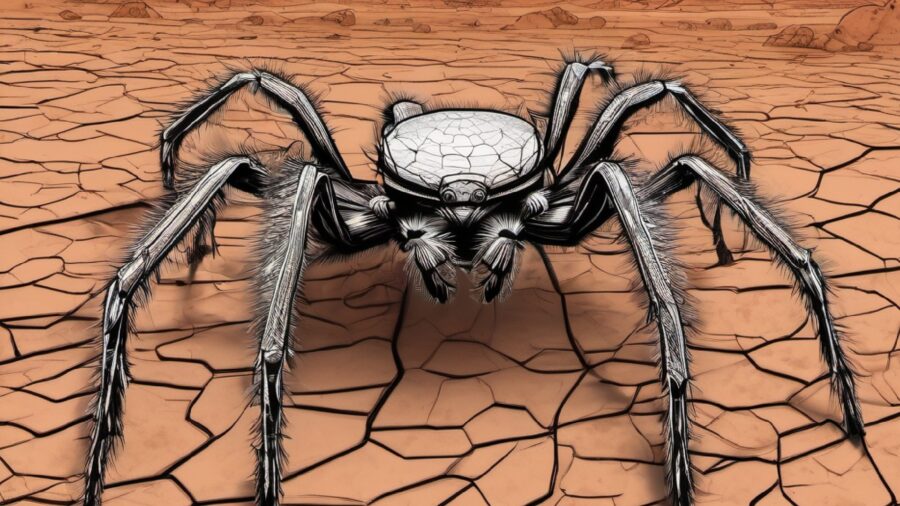
Life on Mars has long been the subject of various works of fiction, some of which often fueled bad dreams. However, the newest revelation, captured by the Mars Express orbiter, straight-out fuels nightmares—if you’re an arachnophobe, that is. Namely, a unique phenomenon that could be mistaken for spiders—millions of Mars spiders across the surface of the red planet.
The Spiders
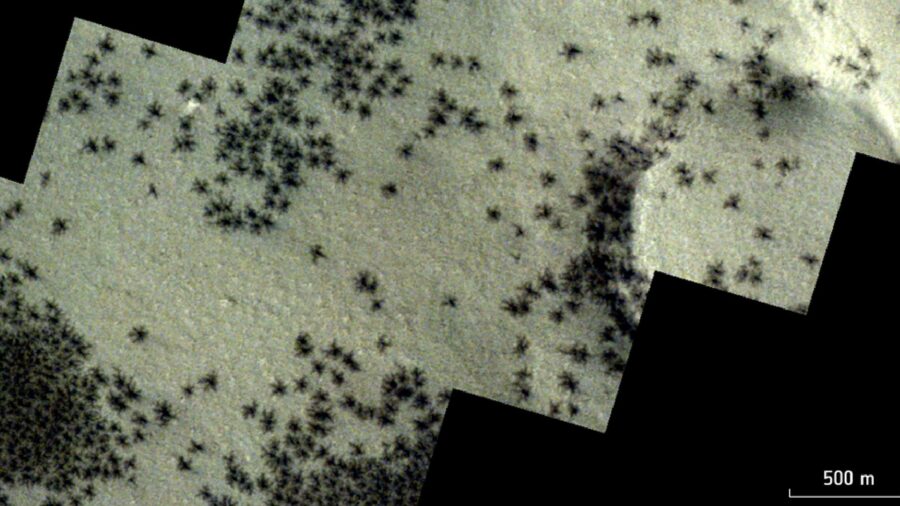
The European Space Agency released a statement regarding the phenomenon captured by the Mars Express orbiter, explaining that the so-called “Mars spiders” are actually small, dark-colored features that begin to form when carbon dioxide deposits get exposed to sunlight during Mars’ Spring months. Namely, the layers of carbon dioxide ice form on Mars’ surface during the winter months, and when the weather gets warmer, the sunlight causes lower carbon dioxide layers to turn into gas that, trapped under the overlaying ice, builds up pressure.
A Trick Of The Eye
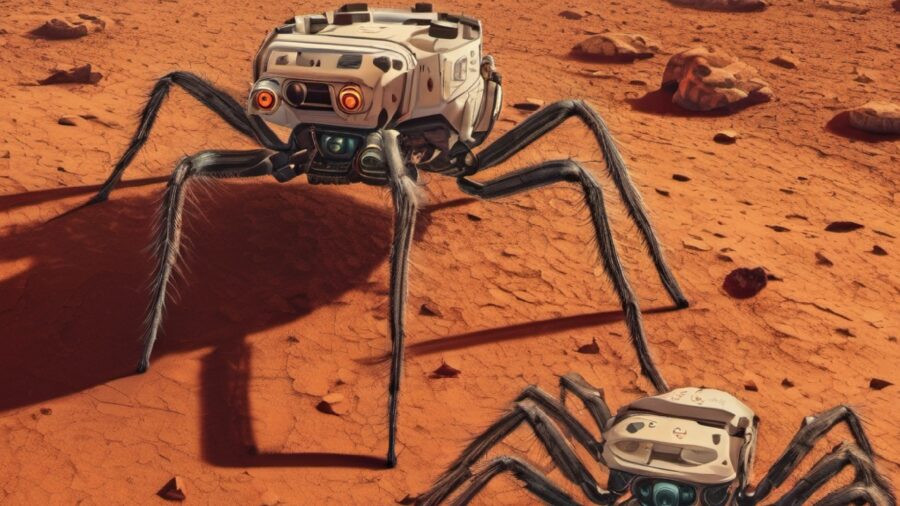
However, once that pressure reaches a certain point, it bursts through the overlaying ice while carrying dark dust from the underlying ground upward, ultimately forcing the dust to explore out of the upper ice layers along with the gas. As it settles on the surface, it basically forms patterns that make up the observed Mars spiders, recorded by the orbiter. While the Mars spider spots might look tiny in the pictures taken by the Mars Express orbiter, they’re actually quite large.
The Inca City
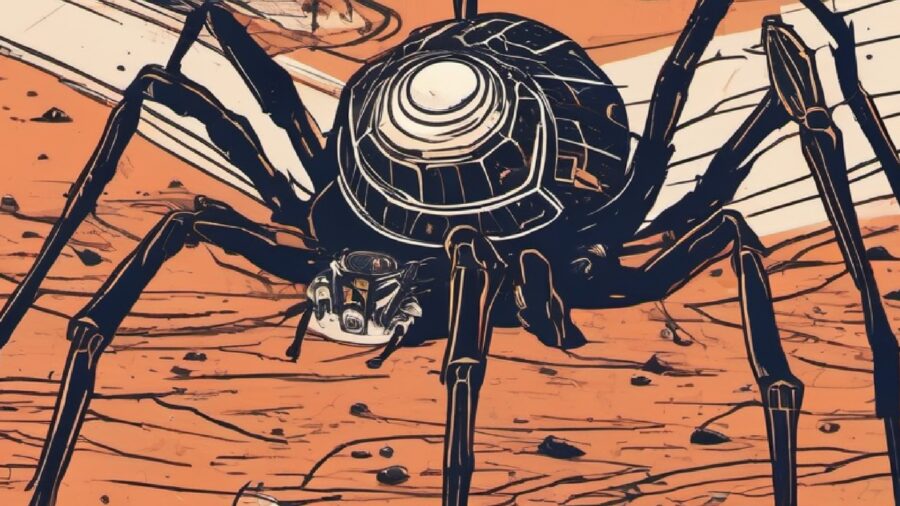
The ESA stated that the observed patches are 145 feet wide at their narrower parts and over half a mile wide at their widest. The Mars Express orbiter was launched by the ESA in 2016, and it has been studying Mars for signs of life in the planet’s past. The vast majority of spider spots were captured near the Inca City on Mars—an area that got its nickname because of the geometric network of ridges.
Angustus Labyrinthus

In fact, the whole area covered in Mars spider spots is also known as Angustus Labyrinthus, precisely due to its complex valley systems characterized by the intersecting valleys and ridges that form intricate patterns that actually resemble a maze. It’s one of several such formations on Mars, which might have been formed by various processes, such as volcanic activity, tectonic shifts, or erosion caused by strong Martian wind storms.
It’s Springtime For Spiders On Mars
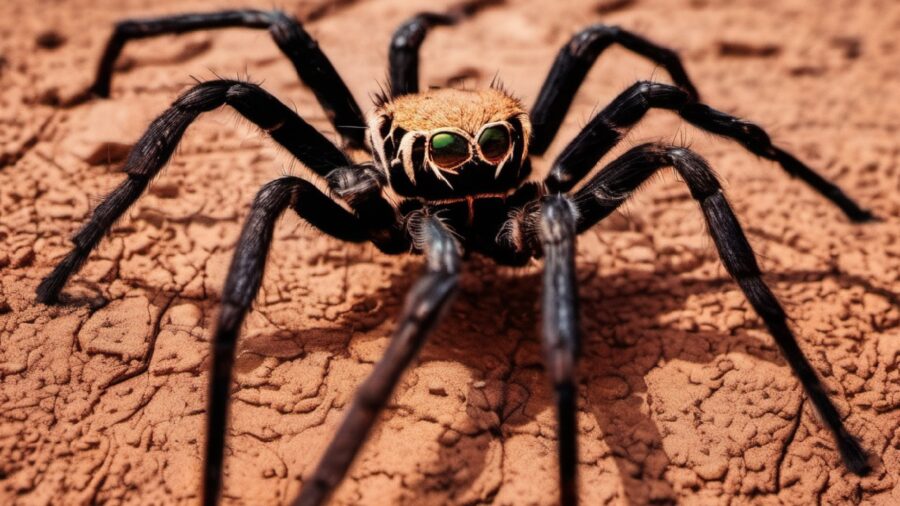
Similar phenomena have been recently discovered in the Utopia Planitia, which is one of Red Planet’s most significant impact basins, when the Chinese rover Zhurong found 16 fascinating polygon structures. Scientists believe that these structures have been formed due to ancient freeze-thaw cycles, which caused the Martian terrain to crack after being previously frozen—a process that was also observed on Earth in areas of permafrost. However, those areas haven’t had any Mars spider formations.
It would seem that Mars is currently experiencing spring-like weather, and NASA shared that its Curiosity Rover has been enjoying the warmer weather on the planet—a statement that most likely ties into the technology powering the rover. It would seem that the weather is so warm and nice that even the Mars spiders have come out to play.
Source: The European Space Agency












